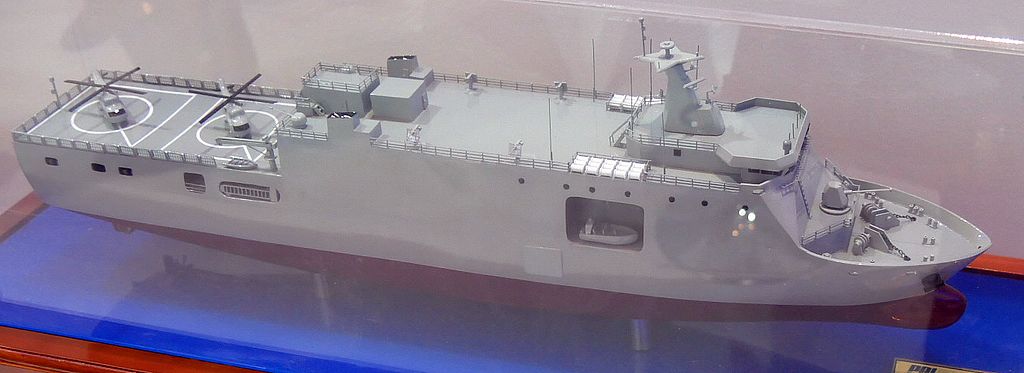
SHAH ALAM: Days after MRSS on The Horizon posting, I received three comments asking me to check out a report by Jakarta Post that PT Pal will be signing the contract for the ship, this August.
I am unable to post the report here, unfortunately, as it is protected by a paywall and the free version only gave one paragraph which did not mentioned anything on the MRSS.
Anyhow, the report datelined Feb 4. from Surabaya mainly quoted PT Pal CEO M. Firmansyah Arifin on developments of the shipyard. Only at the very last, he spoke about the MRSS and said that the contract will be signed in August.
He also said that the MRSS will be similar to the Indonesian Makassar class LPD and the Philippines SSV, though it will be bigger and fully armed. Basically, it’s the same statement, he had been quoted before apart from the August date for the contract signing.
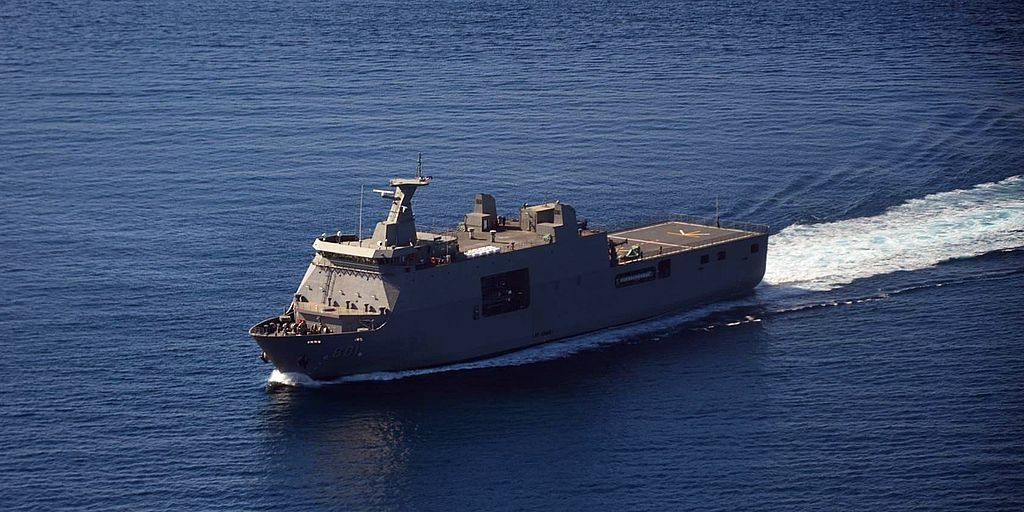
It appears that as usual, the other side seemed to know more about the contract than even RMN Chief Admiral Tan Sri Kamarulzaman Badaruddin.
When I met the Admiral on Thursday he explained that when he tweeted about the MRSS, he was not implying that “the contract is imminent”.
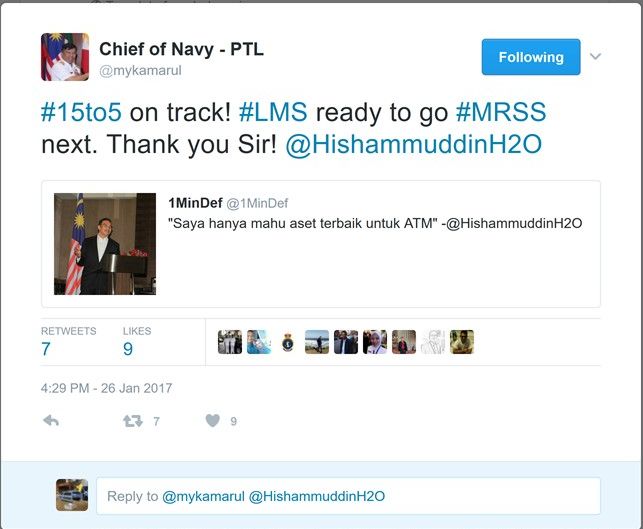
The national news agency, Bernama, also followed up on the tweet which led to a story in a Malaysian news portal that a multi-billion deal was imminent, which Kamarulzaman said was completely inaccurate.
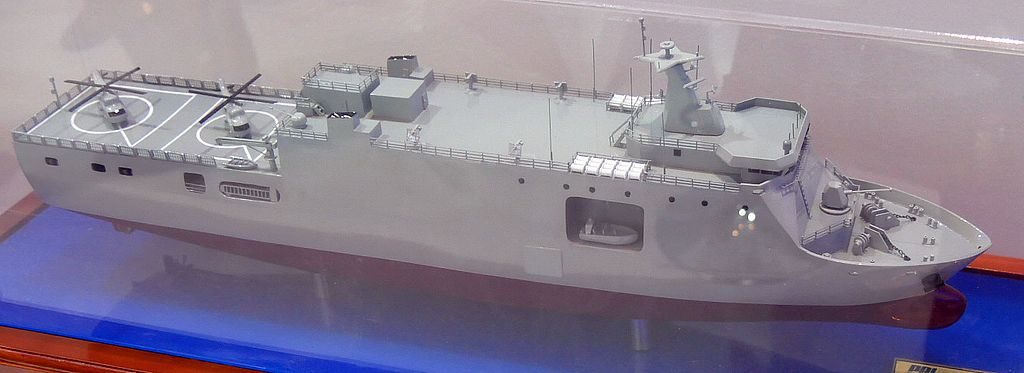
“The minister was just giving his endorsement that the MRSS will be the next RMN project after the LMS“, he added. The endorsement means that now funding for the project could be secured if funds is available.
Asked whether the design will be the same as the Makassar class or the SSV, Kamarulzaman said it will be a different design.
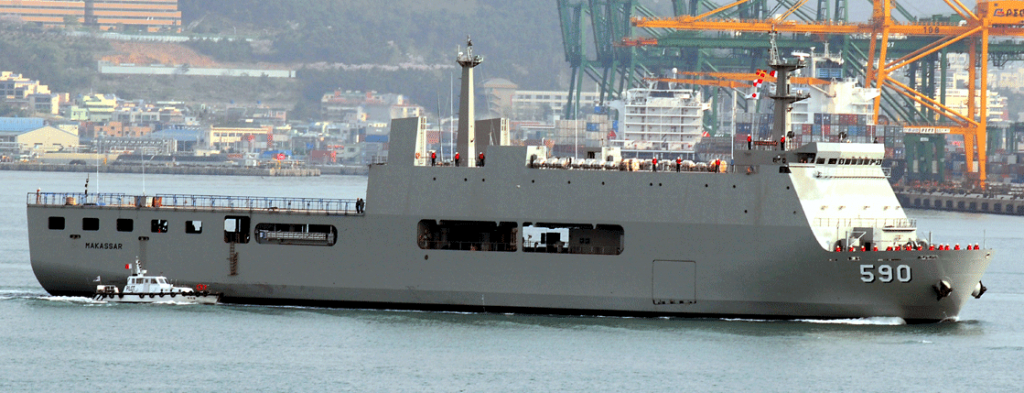
On the cost, Kamarulzaman gave a figure that the RMN was looking at, which seemed to indicate that it will be a different design that the Makassar or the SSV. Based on the figure, it’s likely that the RMN among others want a much higher damage control standard.
Since they are still figuring out the contract, I will not publish the figure quoted by the RMN Chief so as to give them the leeway in the continuing negotiations.
So is a contract imminent? No, based on the conversation with Kamarulzaman. Further to that I had also reach out to other officials at the Defence Ministry, for a better idea on the project and the likelyhood of a contract. I was hoping for more information before writing a post but the story from Surabaya forced me to write about the issue sooner rather than later. I am not trying to discredit the report but I believed that I had to clarify the issue. So what is behind the reports from Indonesia about the MRSS then. I have no idea!
And if not this August when then? A more reasonable timeline will be 12 months from now, according to my sources. And even that will depend on various factors.
* the post has been updated for clarity.
— Malaysian Defence
If you like this post, buy me an espresso. Paypal Payment

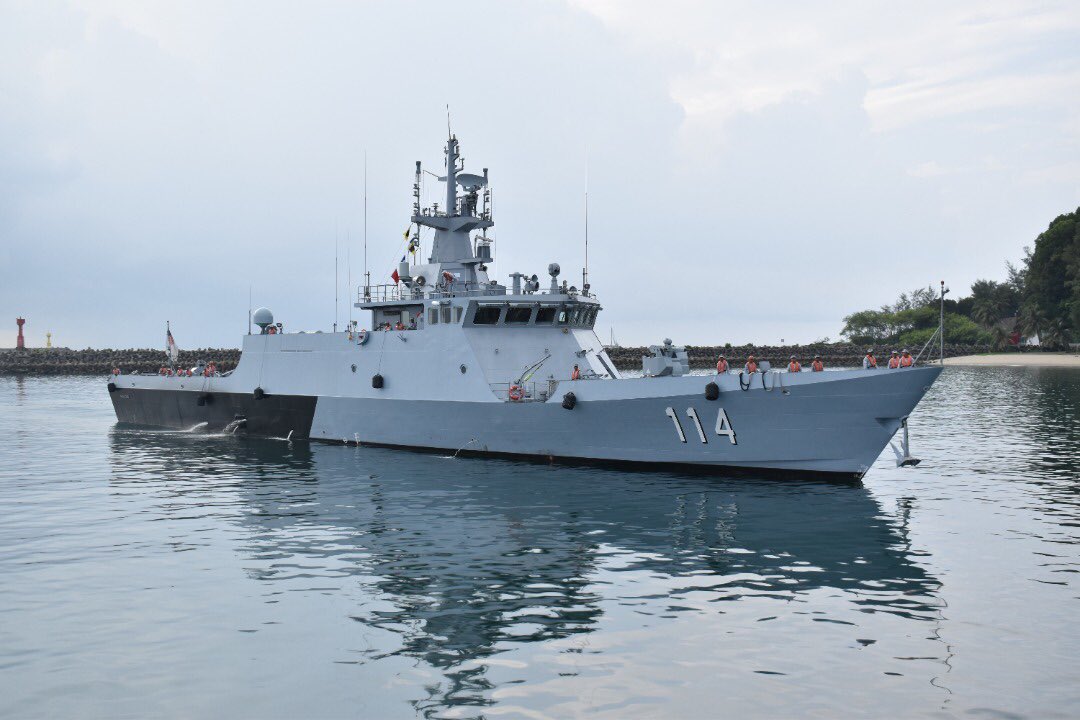
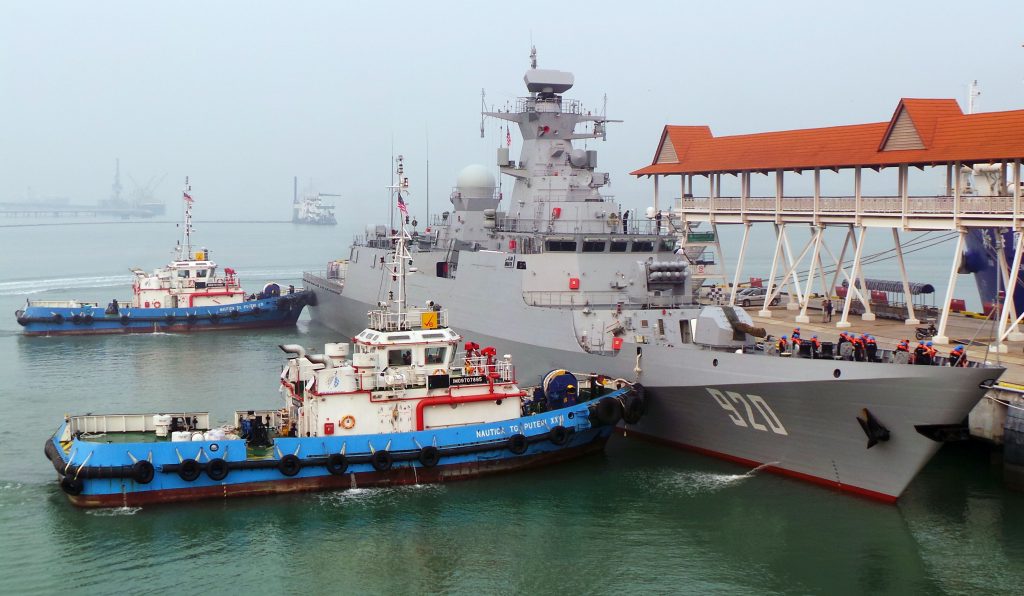
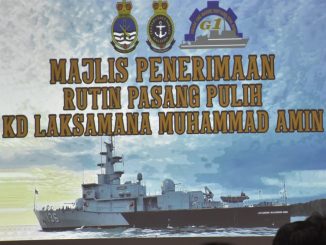
just Indonesia and their media game. hopefully we can see the design soon and also the budget for MRSS.
” It’s likely that the RMN want a much higher damage control standard.”
can someone help me explaining what is higher damage control standard means in the MRSS? i dont understand.
Reply
Put it simply, it will be much more expensive than the Makassar or SSV. The SSV costs US$35 million, if I recall correctly.
Tbh I’m so hoping the rmn won’t choose the pt pal proposal. Not only that it uses commercial built spec, it is also derived ferry design
zack,
More watertight compartments, more bulkheads, harder or higher grade steel, a higher spec fire suppression system, etc, etc.
People often say the Makassar is ”affordable” citing what others paid for theirs but it depends totally on what the customer specifies for the ship. A good example is if a customer wanted Scorpenes but instead of props specified pumpjet propulsion and wanted the hull to have a similar level to USN SUBSAFE standards then this Scorpene would probably cost 3 times more what others paid.
Alex,
Commercial build specs doesn’t automatically mean a ship is inferior
or is lacking any military spec features. If you think about it, some ships build to commercial standards are actually subjected to more stress than military ships build to military standards, e.g. oil & gas ships, drilling ships, etc. Also, HMS Ocean and several other ships were built to commercial standards. A ship built to commercial standards can later be re-registered.
Well, type 071 is better looking than makassar class.
It’s of profound unimportance which is better looking. What’s important is that whatever design we buy is built to specs specified by the RMN and not the industry. Getting the right trade off is the tricky part; if it’s superflous for our needs by being too large and expensive to run [like the Dokdo and Mistral] it becomes a liability [like the RTN with the Chakri Naruebet] and if it’s of the right tonnage but isn’t fitted out for our needs then we don’t get the needed capability.
thank you mr azlan for explaining. i think we better wait for the tender or spec from RMN. hopefully we can see other shipyard compete for the MRSS.
Slightly off topic, but what are problems of configuring catamarans for use as an MRSS ?
Is the 10th para trained in amphibious warfare? And what other units that can perform amphibious missions?
Reply
Yes they do, most of our infantry units are trained in amphibious warfare but its unlike the type trained by the US Marines. Its mostly involved riverine crossing though storming beaches exercise have been conducted but mostly small scale. Due to our terrain, its obvious that our soldiers need to be ready for such contingency.
I’m doubtful that we need a well deck, as our requirements are so different from Singapore, Indonesia, Thailand and the Philippines.
We are unlikely to ever need an amphibious landing capability, and even if we had one we would be hard pressed to protect it under combat conditions. Liken this to the discussions on why we aren’t likely to need a large scale parachute assault force, and the challenges of escorting it and supporting it logistically. And the high cost of keeping up a level of readiness among all the moving parts across the 3 services.
Smaller scale amphibious operations are a different matter, in which case we don’t need a well deck or even a very large vessel. And if we need a large logistics ship to move gear, then again we don’t need a well deck and a direct replacement of the Indera Saktis would do.
Interesting
News said TNI is going to add their LPDs.
News also said this proposed LPD by PT Pal for RMN has 163 metres in length (dokdo 190 m). Looks like it is a mini dokdo already.
Is it coincidence? Will the new batch TNI’s LPDs similar to the proposed LPD for RMN?
Reply
No idea
AM,
I’ve always felt that we should convert one of 10 Para Brigade’s battalions from a jump qualified unit to a ”light infantry mobile unit”; slight difference between the 2. Based on several factors including how resource intensive it is to maintain 3 jump qualified units and the fact that there are other more practical and less injury prone methods to rapidly deploy infantry than by parachute; maintaining 3 jump qualified units is a luxury we can live without. It is telling that many Tier 1 armies are not expanding their airborne units and have resorted to various means of making them more relevant and flexible; including oganisational changes.
Off topic.
The new chief of TNI-AL sealift division wish list of new ships:
6x LST
3x LPD (makassar class), would it be a derivative of the MRSS design?
Reply
No idea
Under the 15-5 plan, will the auxiliary ships bunga mas 5 & 6 will also be decommissioned?
Reply
If its fully funded, there is no need for the ships. Even if it’s not they will need new ships to replace them, they cannot last forever
AM,
I feel that some tend to blur the distinction between having an ”amphibious warfare” per say and having the needed assets. Just like how having a CSAR configured heli doesn’t automatically give one a true CSAR capability; merely having MRSS doesn’t enable a true amphibious warfare capability. Having troops trained to be deployed from ship to shore is the easy part. The not so easy part is placing the troops and all their needed gear at the right place at the right time and having the needed support train [combat loaded], aviation, engineering and other assets. It’s how the amphibious assets work together as part of an overall force and plan that provides an amphibious capability ; not any specific piece of hardware.
Countries like the U.S, France and Britain are considered the few that actually have the ability to conduct full fledged amphibious ops; because they have the needed support train to sustain ops for extended periods away from the nearest friendly base/port. Granted the RMN needs a new class of MRSS but amphibious ops, is not the main factor driving the requirement for the MRSS.
It is telling that marine units in neighbouring countries tend to be used as light infantry rather than their traditional role as amphibious units. Whether it’s in Acheh, Mindanao or along the Thai/Myanmar border; these units were not deployed by sea and performed roles that could have been done by other [non amphibious] units. There was an article a few weeks ago of how the USMC wants to focus more on its traditional role; rather than the type of ops its been mostly performing over the years.
Nihd,
The Bunga Mas Lima and her sister are not commissioned RMN ships; as such they won’t be part of the 5/15. For that matter even the 2 FTVs [which are commissioned assets with the ‘KD’ prefix, unlike the CB90s] as well as a number of tugs [KD Kepah has been retired] are not part of the 5/15.
I think MoD and RMN should process the lpd aquisition as soon as possible if they already agree with the proposed MRSS by PT pal and Boustead. It seems that PT Pal will very busy building lpds for TNI.
After all, first come first serve, right?
Reply
There is a lot of bureaucracy involved, which may seem to be a hindrance. But the MRSS is something that supposed to last at least 20 years in service. A methodical process to ensure its fit RMN requirements must be taken into consideration
10 Para now have 4 parachute batalions
nawab,
More the merrier I suppose. The initial plan in the 1980’s was to have the 10th Strategic Division! Eventually reality set it and they settled on a brigade. The British army which has much more logistical and support resources than us, can call upon the RAFs and RNs lift assets and has worldwide commitments; only has 4 para qualified battalions.
Reply
They had to add an extra battalion as the current three are already swamped by the high operational tempo following the Lahad Datu incursion.
The 10Para should be just a rapid reaction force, not an enduring one. The use of 10Para as a quick reaction force, is to quickly deploy and secure operational areas, so that the normal army battalions have time to prepare and replace those of the 10Para as the main enduring forces. Current ESSCOM deployments should not be the main priority for the 10Para. 10Para’s priority should be to prepare for any future emergencies inside and outside of malaysia.
Reply
They prepare alright but with ESSCOM the most likelihood that those skills are needed they got deploy there as well
Granted but what I don’t get is why they just couldn’t scale down 10 Para’s ESSCOM participation and replace it with another unit? Much less hassle than converting a 4th unit into a para qualified unit as part of 10 Para. Adding a 4th battalion to 10 Para would necessitate the need for expending the unit’s logistical, signals and engineering elements as well as the HQ Brigade [unless it already has more manpower than is needed to oversee 3 battalions].
Ideally, 10 Para should have minimal participation in ESSCOM as it’s a strategic reserve and other units can do what 10 Para’s doing in ESSCOM. Prior to 10 Para of the 2 Gerak Khas Regiments was our strategic reserve; based at Kuala Kubu Baru.
Can someone please enlighten me on the number of brigades the army has?
Obviously there is the 10 Para.
Which is the armoured brigade and where are the Gempitas going to?
And by the way, what level of protection does the Gempita have?
As I understand, the current Australian Army Land 400 Phase 2 tender (which has been narrowed to Boxer and Patria) requires Stanag 4 plus.
Does anyone know?
Reply
I believe the Army has 13 Brigades including the 10 Para and the GGK. The 4th Brigade is the mechanised one, which has two units 19th RMR and 1 Armor with the Gempita. The Army has not said which other unit will operate Gempita, I believe it will be 3 Armor currently based in Sarawak. I stand to be corrected. According to the Wikipedia entry on Gempita
In a not so related issue,
Judging from the weakening of RM (currently around 1USD:RM4.44) and historically it took atleast 8-10 years (compared to 1998 Financial crisis) for the currency to reach sub RM3.2 per 1 USD, the military planners in Malaysia may have to adjust to long term reality change that we may never be able again to sufficiently acquire the most modern western origin military assets thus we may have to look East particularly China, South Korea and even Russia (again).
Granted that the are questions on the quality, sales support and the suitability of such assets acquired from these countries vis a vis against our existing doctrine, support network and familiarity but key point at this juncture (meaning in another 15 to 20 years) their offerings are the only ones seems palatable to our shrinking wallet.
kamal,
Doubtful if we’ll go Russian. There are unresolved issues with MH17 and under Najib preference has been on non Russian stuff. Also bear in mind that Russian stuff may not be ”cheap”; especially if we modify them to suit our requirements [the MKMs] and if there’s a need for integration [doesn’t apply of course to stuff like MANPADs, ATGWs, etc]. Quality is not the issue, some Russian stuff performs just as well or better than Western equivalents.
Reply
With the sanctions put in place following the Crimean annexation, getting parts for the Sukhois and Migs have been much more difficult as payments to and fro takes so long to clear. Coupled that with the inefficiency of the Russian industry, we could be forgiven for not wanting more.
The Russians themselves are facing problems as certain parts for aircraft and other equipment are produced in the Ukraine. The Ukrainians of course have stopped supply. Since we’re on the subject, KMDB has been late in delivering the RTN’s T-84 Oplots. The Thais are not very pleased and apparently KMDB will provide a number of T-84s free as compensation.
Reply
The Thais have bought tanks from China due to the delays. Its likely that they have cancelled the contract
i still prefer damen JSS, although cost about usd 500 mil. but it worth all-in-one packages.
no only provide logistic transportation but we get extra replenishment at sea and class 3 hospital capability. plus 5-7 helicopter mother ship, great multipurpose ship. provide all kind logistic and operation requirement.
if calculate MRSS ship + replenishment ship,+ hospital ship it could cost more and more maintenance/personal cost.
Reply
I also prefer the Damen design but US$500 million per ship is beyond us at the moment. A more likely budget for the MRSS is RM500 million per ship for a 4 ship class which is still cheaper than 1 Damen JSS
MA,
Ya, for current economic situation usd 500 million is about high. but MRSS just for logistic. even more unit still for logistic. actually i think 2 unit JSS good enough for RMN. our LCS more or less same price too.
anyway, due to bigger LPD size about 163 meter with light weapon, RMN spec, plus support packages and training, and gov purchase via BHS, i guess price each ship will be around usd 200 mil.
@ savvykl
usd200mil?
I am looking at the PT PAL MRSS costing at max usd100mil, which is 2 times the price of the Philippines SSV. usd200mil is 4x the price of the original ship, and at that price point, it would be more expensive than the fully navalized Endurance Class LPD (around usd150mil)
Reply
The target price is about the Endurance class cost you stated
says…..
Philippines SSV cost actually usd 90+mil each with with sensor/radar/weapon/accessions all in. many country navy contract break to many small contract so it look “cheaper”.
With RMN MRSS addition spec, better/upgrade weapon/naval gun/ radar, large hull 163 meter cost, large engine, more accessories,landing craft. i guest cost about usd150-160mil to construct full spec in. remaining 40-50mil will be BHS profit or with maintenance packages. you know right MY business culture BNS as middle man will get some profit too.
If follow logically our country shipyard capability
Gov should ask Malaysia Heavy Marine Engineering (MHB) (Pasir Gudang) partner with PT PAL to construct MRSS for RMN due to MHB shipyard have 2 large dry dock with can use for servicing MRSS after commissioning or even 2+2 packages, means 2 unit make in MHB. And BNS shipyard capability at 3000 tons class. this more make sense.